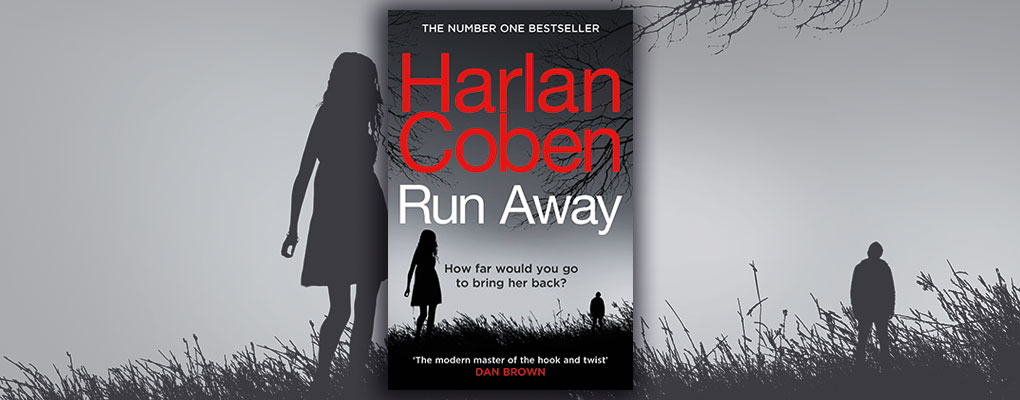Books
Extract: Run Away by Harlan Coben
Run Away by Harlan Coben is the brilliant new thriller from the ‘modern master of the hook and twist’.
You’ve lost your daughter. She’s addicted to drugs and to an abusive boyfriend. You haven’t seen her in six months. Then you find her busking in New York’s Central Park. But she’s not the girl you remember. This woman is frail, filthy, terrified, and in more trouble than you ever imagined. You don’t stop to think. You approach her. You beg her to come home.
She runs. You follow. What choice do you have? And as you descend into the dark, dangerous world she’s lost herself in, you quickly find yourself out of your depths. Down here, no-one is safe – and now both of you might never make it out alive…
Read on for an extract from Run Away by Harlan Coben!
Run Away
by
Harlan Coben
CHAPTER
ONE
Simon sat on a bench in Central Park — in Strawberry Fields, to be more precise — and felt his heart shatter. No one could tell, of course, at least not at first, not until the punches started flying and two tourists from Finland of all places started screaming while nine other park visitors from a wide variety of countries caught the whole horrible incident on smartphone video.
But that was still an hour away.
There were no strawberries in Strawberry Fields and you’d be hard-pressed to call the two-and-half-acre landscaped grounds a field (singular), let alone more than one, but the name was derived not from anything literal but from the eponymous Beatles track. Strawberry Fields is a triangular-shaped area off Seventy-Second Street and Central Park West dedicated to the memory of John Lennon, who was shot and killed across the street. The centerpiece of this memorial is a round mosaic of inlaid stones with a simple caption in the middle:
IMAGINE
Simon stared straight ahead, blinking, devastated. Tourists streamed in and snapped photos with the famed mosaic—group shots, solo selfies, some kneeling on the inlaid stone, some lying down on it. Today, as it is most days, someone had decorated the word imagine with fresh flowers, forming a peace sign of red rose petals that somehow didn’t blow away. The visitors—maybe because the place was a memorial—were patient with one another, waiting their turn to step toward the mosaic for that special photo that they’d post on their Snapchat or Instagram or whatever social media platform they favored with some John Lennon quote, maybe a Beatles lyric or something from the song about all the people living life in peace.
Simon wore a suit and tie. He hadn’t bothered to loosen the tie after leaving his office on Vesey Street in the World Financial Center. Across from him, also sitting near the famed mosaic, a – what do you call them now? vagrant? transient? drug-addled? mentally ill? panhandler? what? – played Beatles songs for tips. The “street musician”—a kinder name perhaps—strummed an out-of-tune guitar and sang in a cracked voice through yellowing teeth about how Penny Lane was in her ears and in her eyes.
Odd or at least funny memory: Simon used to walk past this mosaic all the time when his children were young. When Paige was maybe nine, Sam six, Anya three, they would head from their apartment only five blocks south of here, on Sixty-Seventh Street between Columbus and Central Park West, and stroll across Strawberry Fields on their way to the Alice in Wonderland statue by the model-boat pond on the east side of the park. Unlike pretty much every other statue in the world, here children were allowed to climb and crawl all over the eleven-foot-tall bronze figures of Alice and the Mad Hatter and the White Rabbit and a bunch of seemingly inappropriate giant mushrooms. Sam and Anya loved to do just that, swarming the figures, though Sam at some point always stuck two fingers up Alice’s bronze nostrils and screamed at Simon, “Dad! Dad, look! I’m picking Alice’s nose!” to which Sam’s mother, Ingrid, would inevitably sigh and mutter, “Boys,” under her breath.
But Paige, their firstborn, had been quieter, even then. She would sit on a bench with a coloring book and intact crayons — she didn’t like it when a crayon broke or the wrapper came off — and always, in an ironic metaphor, stayed within the lines. As she grew older—fifteen, sixteen, seventeen—Paige would sit on a bench, just as Simon was doing now, and write stories and song lyrics in a notebook her father had bought her at the Papyrus on Columbus Avenue. But Paige wouldn’t sit on just any bench. Something like four thousand Central Park benches had been “adopted” via big-money donations. Personalized plaques were installed on the benches, most of them simple memorials like the one Simon now sat on, which read:
IN MEMORY OF CARL AND CORKY
Others, the ones Paige gravitated toward, told little stories:
For C & B — who survived the Holocaust and began a life in this city…
To my sweetie Anne — I love you, I adore you, I cherish you. Will you marry me?…
This spot is where our love story began on April 12, 1942…
The bench that Paige most preferred, the one she’d sit on for hours on end with her latest notebook — and maybe this was an early indicator? — memorialized a mysterious tragedy:
The beautiful Meryl, age 19. You deserved so much better & died so young. I would’ve done anything to save you.
Paige would move from bench to bench, read the inscriptions, find one to use as a story prompt. Simon, in an attempt to bond, tried to do that too, but he didn’t have his daughter’s imagination. Still, he sat with his newspaper or fiddled with his phone, checking the markets or reading the business news, as Paige’s pen moved in a flurry.
What happened to those old notebooks? Where were they now?
Simon had no idea.
“Penny Lane” mercifully came to an end, and the singer/panhandler segued right into “All You Need Is Love.” A young couple sat on the bench next to Simon. The young man stage-whispered, “Can I give her money to shut up?” to which his female companion snickered, “It’s like John Lennon is being killed all over again.” A few people dropped some coins into the woman’s guitar case, but most people stayed clear or backed away making a face that indicated they had gotten a whiff of something of which they wanted no part.
But Simon listened and listened hard, hoping to find some semblance of beauty in the melody, in the song, in the lyrics, in the performance. He barely noticed the tourists or their tour guides or the man who wore no shirt (but should) selling water bottles for a dollar or the skinny guy with the soul patch who told a joke for a dollar (“Special: 6 Jokes for $5!”) or the old Asian woman burning incense to honor John Lennon in some vague way or the joggers, the dog walkers, the sunbathers.
But there was no beauty in the music. None.
Simon’s eyes stayed locked on the panhandling girl mangling John Lennon’s legacy. Her hair was matted clumps. Her cheekbones were sunken. The girl was rail-thin, raggedy, dirty, damaged, homeless, lost.
She was also Simon’s daughter Paige.
Enjoyed this extract from Run Away by Harlan Coben? Let us know in the comments below!
3 Comments
Join the discussion
Please note: Moderation is enabled and may delay your comment being posted. There is no need to resubmit your comment. By posting a comment you are agreeing to the website Terms of Use.


Looks like it’s going to be another good read from Harlan, I’m rarely disappointed by any of his books.
Sounds like Harlan Coben is up to another good story.
Love his books … really want to read this now!